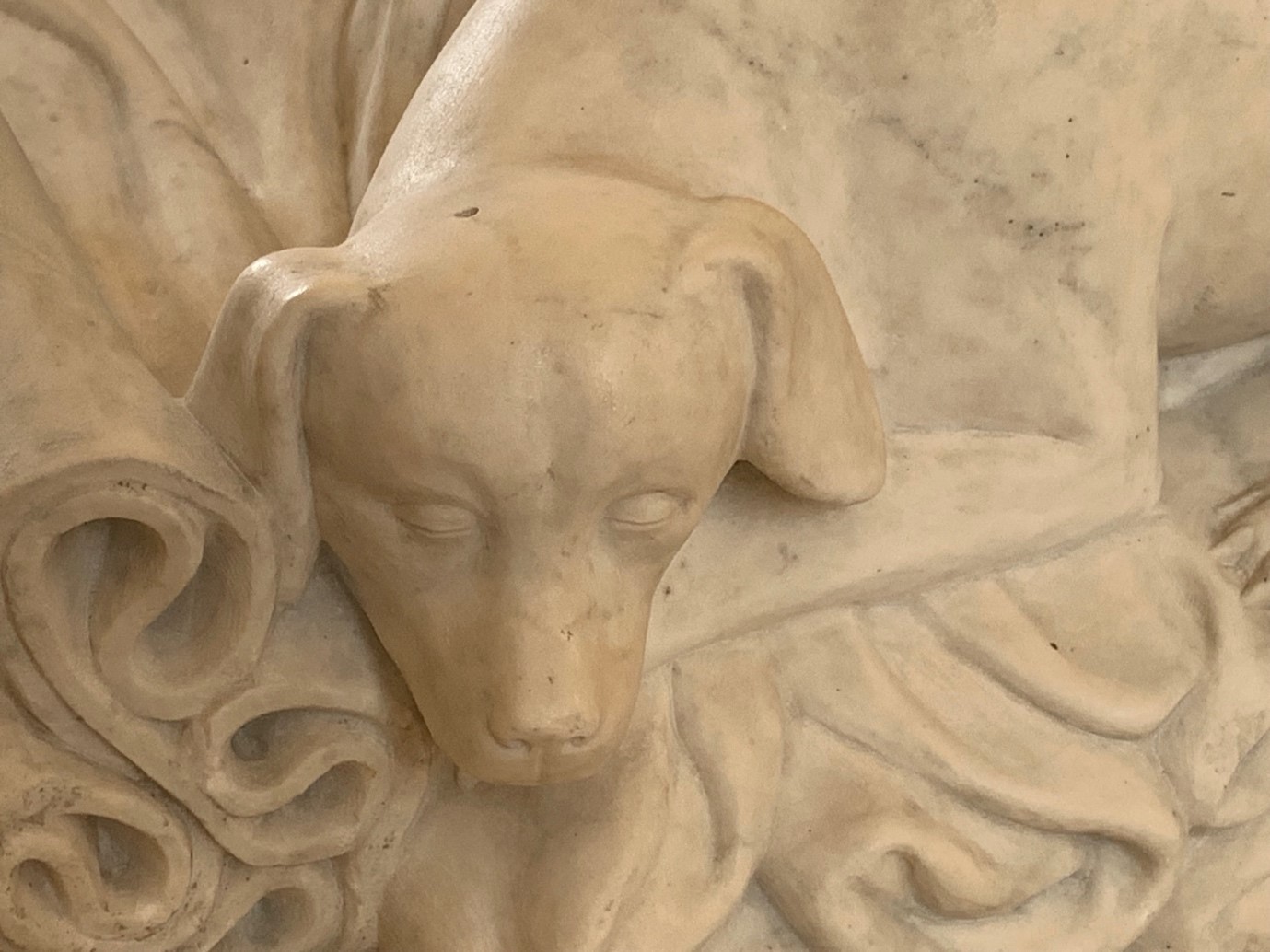

The Dog’s Snout
My Louvre by Antoine Compagnon

The Dog’s Snout
Catherine d’Alençon commissioned a double tomb for herself and her husband Pierre de Navarre after the latter’s death in 1412 (Richelieu, room 210). But she outlived him so long—fifty years—that she remarried and was buried elsewhere. In most of the funerary sculptures of this period and in this room, the feet of the recumbent figures rest upon lions or dogs for eternity. Lions, symbols of resurrection (apparently lion cubs are born dead), are usually attributed to men, and dogs, or sometimes unicorns betokening virginity, to women. There is something so alluring about the touch of the body of the departed and the friendly animal—obediently curled upon itself, loyal, since dogs represent loyalty—that one would want to fall asleep here forever. Each time I come back to wander these halls, I have the impression that all the visitors feel the same sense of peace. I have to do all I can to resist the temptation to stroke the snout of this faithful animal.